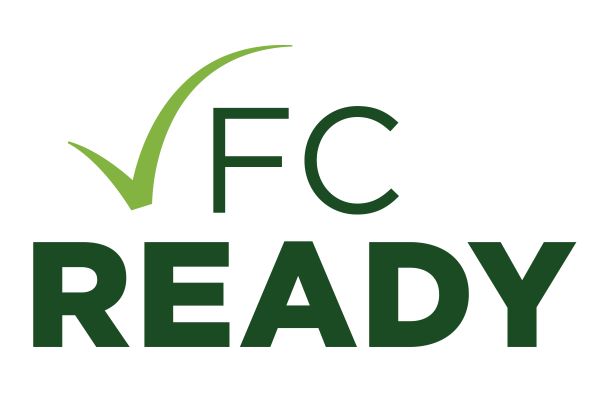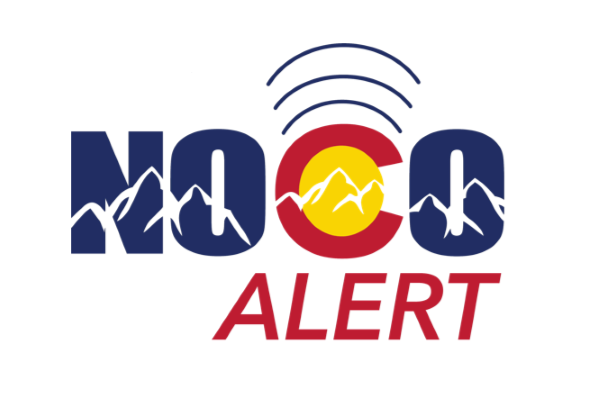Prepare for Emergencies with FC Ready#

FC Ready is the City of Fort Collins Emergency Preparedness and Security Department's public education campaign. Through FC Ready you can learn about the hazards you may face in Fort Collins and learns way to prepare for emergencies and disasters.
Emergency Kits
An emergency kit is a collection of items you may need during an emergency. Emergency kits should include supplies for each member of your family, including pets.
Emergency Communications Plan
Emergency Communications Plans help you and your loved ones stay in touch during emergencies.
Emergency Alerts
Register to receive local emergency messages on your cell phone, work phone and email.
Hazards
Fort Collins is subject to severe weather including wildfire, flooding and severe snowstorms. Learn about which hazards we face locally and how to prepare for and respond to them.
Preparedness for Kids
Every member of your family can and should prepare for emergencies, including children.
Pet Preparedness
Pets are part of the family and should be included in your emergency preparedness plans.
Whole Community Preparedness
Check out preparedness tips for older adults, those with disabilities and those with limited English.
Emergency Kits#
An emergency kit is a collection of items you may need during an emergency. Emergency kits should include supplies for each member of your family, including pets.
Emergency Kit Checklist#
Essentials:
- Water
- First aid kit
- Food
- Flashlight & extra batteries
- Can opener
- Prescription medication
- Sleeting bag or warm blankets
- Matches
- Clothing
Useful:
- Battery powered / hand crank radio
- Cell phone charger
- Garbage bags
- Duct tape or zip ties
- Hand tools
- Paper maps
For Pets:
- Pet first aid kit
- Food & water
- Crate or carrier
- Extra leashes & collars
- Pet waste bags
- Cat litter & tray
Emergency Communications Plan#
Before a disaster strikes, make an Emergency Communications Plan for all the members of your family. Having a plan will help you and your loved ones stay in touch during an emergency.
Share the plan with your family members and make sure there is at least one physical copy in a place everyone can access.
What To Include In Your Plan#
- Family cellphone numbers
- Work/desk phone numbers
- School and childcare phone numbers
- Doctors and primary care provider contact information
- Veterinarian contact information
- Non-emergency phone numbers for police and fire
- Poison Control phone number
- Medical, Homeowners, and Flood Insurance contact information and policy numbers
- Utility provider(s) contact information
- Out-of-Town contact: Someone who lives outside your community that you can contact in an emergency. This person can help you and your family reconnect if local calls aren’t possible during a disaster.
Emergency Alerts#
Register to receive local emergency messages on your cell phone, work phone and email through NOCO Alert.
Accessible Alerts#
Alerts in Other Languages: The ReachWell app allows community members to receive public safety alerts in languages other than English.
Deaf Link: Community members can sign up to receive accessible alert messages. Registered community members can receive alert messages in American Sign Language (ASL) and English voice and text.
Want to sign up for alerts in Weld County? Register Here.
Preparedness for Kids#
Every member of your family can and should prepare for emergencies, including children.
Plan#
Have a conversation about being prepared for emergencies.
- Talk with your kids in age-appropriate ways about the emergencies that could happen in your area.
- Address their fears. Listen to their concerns and validate their feelings. Let your kids know it's okay to be scared, but also emphasize that you are taking steps to keep them safe.
- Make it fun. Use stories, games, and activities.
Create a family emergency plan:
Make a plan that includes meeting places, emergency contacts, and designated caregivers. Include contact information for schools or childcare providers.
Involve your kids: Practice your plans to familiarize your kids with the plans. Make it fun and positive.
Create a Kid-Friendly Emergency Kit#
In addition to the basic items in your emergency kit, include specific items for kids:
- Comfort items: Stuffed animals or toys
- Activities: Games, coloring books and crayons
- Food: Formula, baby food, and favorite snacks
- Hygiene: Diapers, wipes, and change of clothes
- Medications: Prescriptions and over-the-counter medications for your kids
- Records: Have copies birth certificates, information about medical conditions, and other important information
Involve your kids: Let kids help pack your family emergency kit and choose their comfort items and activities!
Additional Resources#
Pet Preparedness#
Pets are part of the family and should be included in your emergency preparedness plans.
BEFORE#
Emergency Kit: Include items in your emergency kit for your pets.
- Food and water
- Crate or carriers
- Leash, harness, and collars
- Medications and copies of medical records
- Litter box and sanitation bags
- Toys
- Current photos of your pet
Identification: Ensure that your pet’s ID tags and microchip are up-to-date.
Practice: Regularly practice getting your pet in their carrier.
Plan: Identify places you can leave pet during an emergency, such as with friends or family, or at boarding facilities.
DURING#
Follow Evacuation Orders: If evacuation is necessary, take your pet with you.
Maintain Routine: Stick to your pet's regular schedule as much as possible.
AFTER#
Examine your pet for injuries and go to a vet if needed.
Report missing pets to local shelters and animal control.
Whole Community Preparedness#
Check out preparedness tips for older adults, those with disabilities and those with limited English.
Sign Up for Emergency Alerts
Register to receive local emergency messages on your cell phone, work phone and email through NOCO Alert.
If you rely on alternative communication methods (American Sign Language (ASL), Braille, etc.), identify a backup plan to receive emergency information.
- Emergency alerts are available in ASL, text-to-speech, and other languages.
Before an Emergency#
- Know your risk: Familiarize yourself with the types of emergencies common in your area.
- Build Your Support Network: Identify friends, family or neighbors who can assist you during an emergency. Discuss your specific needs and evacuation plans with them.
- Have an Emergency Kit: Include essential supplies like water, non-perishable food, medications, a battery-powered radio, flashlight, first-aid kit, and sanitation wipes.
- Personalize Your Kit: Include items specific to your needs, such as extra batteries for assistive devices, communication aids, mobility devices, or personal care supplies.
- Develop a Communication Plan:
- Program emergency contact numbers into your phone. Consider a waterproof medical ID bracelet or something that can be handed to first responders with details of your specific needs.
- Practice Your Plan: Go through your evacuation plan with your support network. Practice using assistive devices in different scenarios.
During an Emergency#
- Follow Emergency Instructions: Listen to local authorities for updates and evacuation orders.
- Evacuate if Necessary: If evacuation is ordered, use your established plan with your support network.
- Advocate for Yourself: Clearly communicate your needs to first responders and shelter staff.
After an Emergency#
- Stay Informed: Continue to monitor local news for information about recovery efforts.
- Contact Your Support Network: Let your support network know you are safe.
- Seek Assistance: Don’t hesitate to ask for help with essential needs like food, water, or medical care.
- Report any damage to your home or assistive devices to your insurance company and local authorities.
